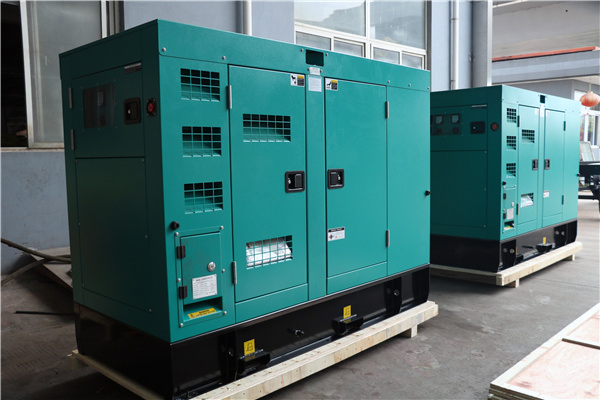The generator usually consists of stator, rotor, end cap and bearing. The stator consists of a stator core, wire winding, frame and other structural parts fixing these parts. The rotor consists of rotor core (or magnetic pole, magnetic choke) winding, protection ring, central ring, slip ring, fan and rotating shaft components.
The stator and rotor of the generator are connected and assembled by the bearing and the end cover, so that the rotor can rotate in the stator and do the motion of cutting the magnetic field lines, thus producing the induced potential, which is led out by the terminal and connected in the loop, and the current is generated.
Because most generators are coaxially linked with prime movers, thermal power plants use high-speed steam turbines as prime movers, so turbogenerators usually use high-speed 2-pole motors with a speed of 3000 RPM (3600 RPM when the grid frequency is 60 hZ). Nuclear power stations use 4-pole motors with a speed of 1500 RPM (1800 RPM when the grid frequency is 60 hZ). In order to meet the requirements of high speed and high power, the high speed synchronous generator is constructed with implicit pole rotor and special cooling system.
Hidden pole rotor: the surface is cylindrical, grooves are made on the surface of the cylinder to place the DC excitation windings, and the metal slot wedges are fixed, so that the motor has an average air gap. Due to the great centripetal force when rotating at high speed, the rotor has high mechanical strength. The hidden pole rotor is generally made of high strength alloy steel, and the groove shape is usually open-tooth shape, so that the excitation winding can be installed. About 1/3 of each pole distance is not slotted locally, forming big teeth; Other parts of the teeth are narrower and are called denticulata. The center of big tooth is the center of magnetic pole of rotor. Sometimes big teeth also open some smaller ventilation groove, but not embedded winding; Sometimes also in the bottom of the line groove milling out a narrow and shallow groove as a ventilation groove. The implicit pole rotor is also provided with a metal guard ring and a central ring at both axial ends of the rotor body. The guard ring is a thick-walled cylinder made of high strength alloy, which is used to keep the end of the excitation winding from being thrown out by the great centripetal force. The center ring is used to avoid axial movement of the winding end and to support the guard ring. In addition, in order to field current into the field winding, the motor shaft is also equipped with a collector ring and brush.
Cooling system: because the energy loss in the motor is proportional to the volume of the motor, its magnitude is proportional to the cubic power of the magnitude of the motor linearity, and the magnitude of the motor cooling surface is only the quadratic power of the magnitude of the motor linearity. Therefore, when the size of the motor increases (limited by data, increase the capacity of the motor will have to increase its size), the heat required to distribute on the surface of the motor per unit will increase, and the temperature rise of the motor will improve. In the high speed turbogenerator, the centripetal force will produce great tangential stress on the surface of the rotor and the surface of the central hole of the rotor. The larger the diameter of the rotor is, the greater the stress will be. Therefore, within the stress limit allowed by the forgings data, the rotor body diameter of the 2-pole turbogenerator cannot exceed 1250 mm. To increase the capacity of a large turbogenerator, it is necessary to increase the length of the rotor body (i.e., the slender rotor) and improve the electromagnetic load. The rotor, which can reach 8 meters in length, is nearing its limit. To continue to improve the single capacity, can only improve the electromagnetic load of the motor. This makes the heating and cooling problems of large turbogenerators particularly prominent. For turbogenerators with less than 50,000 kW, closed-circuit air cooling system is adopted, and the heating parts are cooled by blowing by fans in the motor. Hydrogen cooling is commonly used for generators with capacity of 50 to 600 thousand kilowatts. Hydrogen (purity 99%) heat dissipation performance is better than air, using it to replace air not only heat dissipation effect is good, but also can make the motor ventilation friction loss is greatly reduced, so as to significantly improve the efficiency of the generator. However, the use of hydrogen cooling must have explosion-proof and leakproof measures, which makes the motor structure more complex, but also increases the cost and cost of electrode data. In addition, the liquid medium can also be used for cooling, such as the relative cooling of water to air 50 times, take away the same heat, the flow of water is much smaller than the air. Therefore, using a local hollow wire in the coil, water cooling in the wire, can greatly reduce the temperature rise of the motor, delay insulation aging, increase the life of the motor.
Summary: Generator is usually composed of stator, rotor, end cap and bearing. The stator consists of a stator core, wire winding, frame and other structural parts fixing these parts. The rotor consists of rotor core (or magnetic pole, magnetic choke) winding, protection ring, central ring, slip ring, fan and rotating shaft components.
Jiangsu Meiao Power Technology Co., Ltd. is an important manufacturer of diesel generators. Us ao-generator set manufacturers mainly manufacture and sell diesel generator sets, the power of generator sets is 3-3000KW, mobile station is 24-600KW, Marine emergency diesel generator set 24-800KW, gas generator set, heavy oil generator set and all kinds of imported series, special series (trailer, silent speaker, mobile lighthouse, container, etc.) diesel generator Group at the same time engaged in generator set maintenance and generator set accessories after-sales service.


